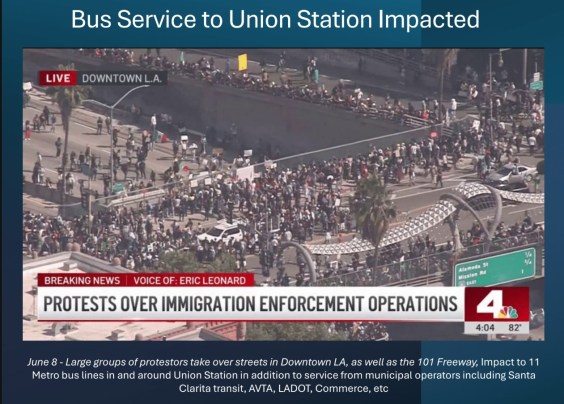Two key Caltrans documents are being finalized this week, and there's a last chance to submit comments on them before Friday. Both address the ways that Caltrans measures and accounts for new travel induced by their projects.
This is a key issue because increased travel leads to increased greenhouse gas (ghg) emissions and other pollutants, health and safety problems, and congestion. It's a deeply complex and wonky issue that California has been working on since the passage of S.B. 743 in 2013, a bill that called for planners to change the way they measure traffic impacts under the California Environmental Quality Act.
The two documents are updates to Caltrans' Transportation Analysis Framework (TAF) and Transportation Analysis Under CEQA (TAC). Their purpose is to help planners identify transportation projects that will lead to a "measurable and substantial increase in vehicle travel" so something can be done to reduce the impact of that travel. This has been a major cultural shift in how Caltrans interprets, analyzes, and mitigates transportation impacts - a switch from seeing congestion as an obstacle to travelers to recognizing induced travel as an obstacle to decreasing emissions.
Both documents have been in development for several years, and revisions have already been posted online, discussed at length, and vetted by multiple committees, including an expert panel of academics and practitioners convened through the University of California Berkeley's Tech Transfer center.
According to the TAF, these updates "reflect an evolving understanding of S.B. 743 implementation."
But there are few major changes here since the first version in 2020, beyond a few needed clarifications. For example, the definition of "local roads" was restated to make clear that these are not automatically exempt from the requirement to account for new vehicle miles traveled (VMT).
Another clarification is based on a recent executive order from Governor Newsom on affordable housing, in which he called for Caltrans to include infill housing among potential mitigation strategies.
Mitigation remains important where adverse environmental impacts from increased traffic cannot be avoided or lessened. They must be proportional to the project's impact, and have a rational connection to it, and they must be feasible and enforceable.
Unfortunately, however, giving up and issuing a Statement of Overriding Consideration - basically saying that "we can't do anything about all the travel we are inducing here, and we want to build this project anyway" - remains an option, although it must be "supported by substantial evidence" and the impacts must still be documented and disclosed.
The documents note that "the most cost-effective [mitigation] measures… include transit-oriented development, transportation demand management, and VMT-efficient housing projects." They provide a list of potential mitigation measures, including incorporating bike and pedestrian infrastructure, promoting mass transit, and giving transit priority. A separate document is currently being developed by Caltrans that will include more detailed suggestions for mitigations.
Notably, the documents address the question of auxiliary lanes, which are exempt from VMT analysis if they are under one mile in length. However, there is evidence that LA Metro and Caltrans have broken up some of their longer projects into smaller, less-than-one-mile segments to avoid having to do a VMT analysis and the required mitigations. The updated guidance calls for "a careful examination" to determine whether a series of auxiliary lanes in a corridor really are separate, and if it is determined that they would "collectively create a significant increase in VMT in the corridor, an induced travel analysis would be required."
One thing the TAF and the TAC fail to address is the question of induced truck travel. This is an ongoing issue with a number of current highway projects in California, but the Office of Planning and Research, in its original rule-making, decided that induced freight VMT does not need to be accounted for. This has created a backwards situation where planners actually subtract an estimate of induced truck travel from the overall induced VMT they expect from projects. But, according to OPR and these guidance documents, that's allowed.
It doesn't make sense. Truck traffic is as much a problem as passenger vehicle traffic, in terms of emissions, congestion, and safety and health impacts. Or more of a problem. But freight is money, and it talks loudly.
This is an issue that needs fixing, and urgently - especially in the face of highway expansions in the Inland Empire and the Central Valley, where planners are expecting - and planning for - large increases in truck traffic volumes. It basically means that more than a quarter of induced VMT is not being accounted for, and that California will continue to see increases in ghg emissions and other pollutants for years to come.
Note that the emissions still have to be measured under CEQA, but as a separate issue - these documents only address induced travel. However, the whole reason California is concerned about VMT, and why it is now incorporated into CEQA guidance like these two documents, is that new VMT leads to more emissions.
There are those who claim that reducing idling in traffic congestion by widening highways makes for more efficient driving and therefore fewer emissions. It's common to see highway plans - the Southeast Connector in Sacramento County, for example - claim their project will "reduce congested VMT," as if that means a reduction in overall VMT or overall emissions.
It doesn't. Expanding capacity increases vehicle miles traveled, which increases emissions. Trying to word it differently is just sophistry.






